Unpaid Leave and ‘Inconvenient’ Postpartum Bodies—Why Ballerinas Are Fighting for Their Rights

In 2019, Alexandra Basmagy, then a corps de ballet dancer with American Ballet Theatre (ABT), one of the world’s most renowned dance companies, found herself pregnant and trekking around New York, teaching classes at ballet schools to try to make some extra cash. The hustle of teaching classes back-to-back in her second trimester was exhausting, but necessary to supplement her income: Not long after a tour engagement at the Kennedy Center, where Basmagy performed as a soloist at around 16 weeks pregnant, she was put on leave. Going on leave so early in her pregnancy was not solely her decision. For the 10 months she was out, her salary was cut significantly, by a percentage that varied over the time period, but reached as high as 80 percent.
Telling the artistic staff about her pregnancy was never contentious, she says. But she also felt like she didn’t have much say in when her leave started, even though she was routinely showing up to take classes, which for dancers in some companies, including ABT, is unpaid. (Classes are not technically mandatory and aren’t part of the contracted working hours, though it’s expected that dancers take them.)
According to ABT, maternity leave is handled on a case-by-case basis, and the question of when a leave begins typically includes consultations with the artistic staff. The dancer is usually part of the conversation too, but Basmagy didn’t feel like she was given much say over how long she could dance. She had seen other dancers go through pregnancies at ABT, and figured she was going with the flow of standard procedure. “I’m just like, ‘Okay, that’s how it was done with everybody before me, and I guess that makes sense,’” she says.
But two years after returning to work in January 2020, she determined that just because that’s how it had always been done didn’t mean that’s how it had to stay. In March 2020, as companies began canceling performances and closing studios due to the Covid-19 pandemic, dancers who were also mothers, from ABT and other companies nationwide, convened in a WhatsApp group started by Basmagy’s colleague Lauren Post. It began as a place to check in, commiserate during a stressful time, and ask for advice. Later, as ABT’s next contract negotiation approached, Basmagy and Post turned to the group to ask about workplace policies—they wanted to know what parental leave looked like elsewhere in the ballet world.
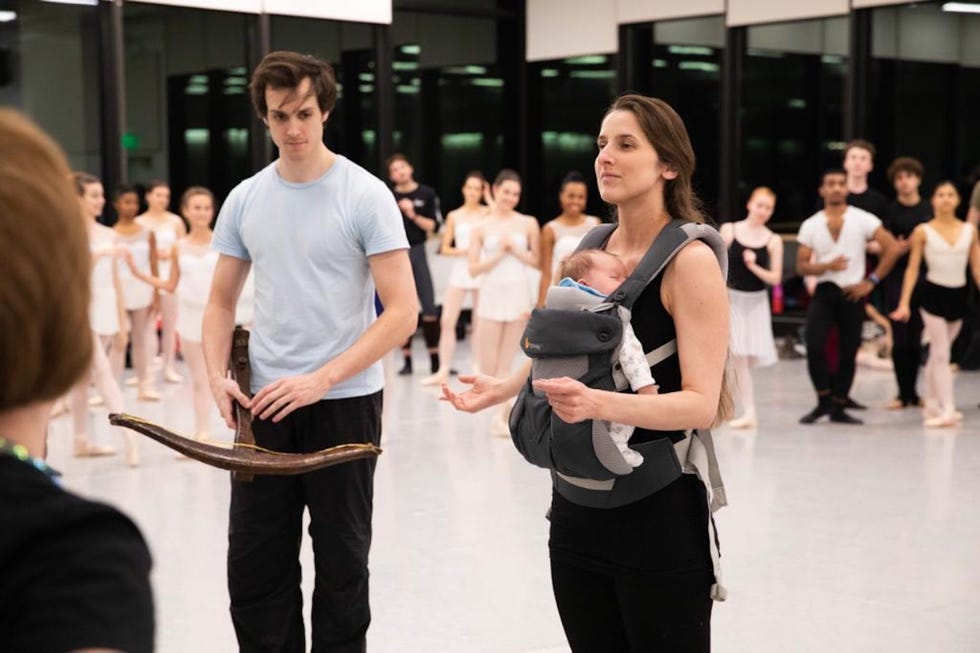
Ballet West principal dancer Allison DeBona at a rehearsal with her baby.
Responses poured in. At some companies, dancers had to use all their sick leave first. In others, dancers received their full salary until giving birth, while others were put on unpaid leave. Some companies offered dancers the opportunity to do other work in the months leading up to giving birth to earn their full salaries. Going on leave, with the significant salary cut that comes with it, creates a cascade of concerns: There’s the obvious financial burden, especially if someone doesn’t have a partner or cannot live on one income. Some dancers said that they used up all their maternity leave months before their babies were even born; others stated that the lack of paid leave pushed them out of the field entirely. Increasingly, protections for pregnant and parenting dancers are something artists are fighting for. “I didn’t even think that there could be another way,” Basmagy says, “until I spoke with mothers in other companies who were kept on board for their entire pregnancy. I was like, ‘I didn’t even think that was an option.’”
At the beginning of the pandemic, several publications covered the “ballet baby boom,” an increase in dancers having children that began when performances paused. It wasn’t that there had been no professional dancers who’d had children before, of course. Many of those stories have been captured, and some dancers have spoken openly about their experiences. But the so-called baby boom sparked fresh urgency around what it means to actually support pregnant and parenting dancers in the workplace.
“This fight is unprecedented mainly due to the long-standing cultural and structural challenges within the world of classical ballet,” Tracy Jones, former professional ballet dancer and the current director of collective bargaining for the American Guild of Musical Artists (AGMA), tells ELLE. For so long, there have often been assumptions about physique, body type, and gender roles, she says, and there’s a history of pregnancy being seen as something that makes continuing a career in ballet impossible.
AGMA companies are seeing changes, Jones says, including language that allows an artist to continue to rehearse or take on different work in the organization as long as it’s safe to do so, and straightforward wording about policies that Jones says covers any parent, regardless of gender and regardless of whether they’ve given birth.
“Pregnant or postpartum bodies are sometimes deemed ‘inconvenient’ because of the ways they’ve changed.”
Jones has seen a shift in advocacy by artists across the country in regard to pregnancy and paid parental leave. With more dancers and companies showing it’s possible to do this, she says, “there is a louder collective voice at the table to ensure that there are protections in contracts.”
In the United States, there is currently no federal law that provides a right to paid leave, though the Family and Medical Leave Act requires certain employers to provide some workers with unpaid leave. “If you don’t have a standard, federally mandated policy, that means the companies are scrambling. That means the dancers are scrambling,” says Elizabeth Yntema, president and founder of the Dance Data Project, which has observed growing calls for family leave, child care, and lactation rooms.
While ballet has distinct issues because of the physicality of the career, the structural challenges facing dancers who are parents mirror those happening across industries, just as the field is impacted by systemic issues, including in regard to race, gender norms, and accessibility. In Dancing Motherhood, Ali Duffy, PhD, professor of dance at Texas Tech University, writes that the penalty mothers seem to face in dance is indicated by the lack of people with children advancing to positions of leadership, garnering funding, and achieving awards, compared to their male or child-free counterparts. “There are many more women in the industry than men, so women are sometimes treated as expendable and can lose jobs or advancement opportunities if they choose to temporarily leave to give birth or adopt a child. Additionally, their pregnant or postpartum bodies are sometimes deemed ‘inconvenient’ because of the ways they’ve changed,” she says.
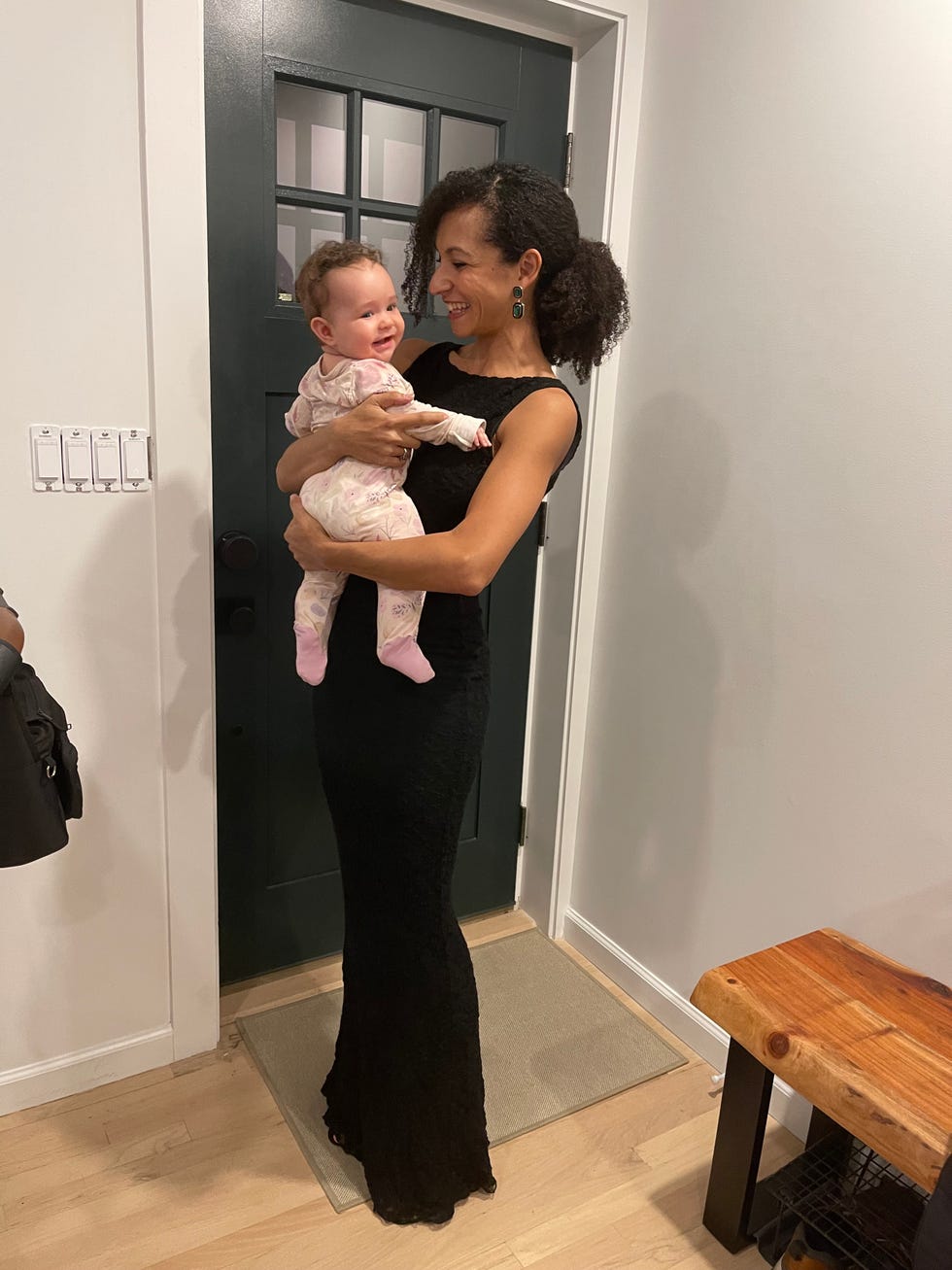
Choreographer Claudia Schreier with her baby.
Much of what should be happening to actually support pregnant and parenting dancers comes down, in part, to a lack of federal, state, and regional support for the arts. With more funding, “they could begin to put these structures in place where dancers do have opportunities to have full-time employment with benefits that would include parental leave and appropriate health care, and this is true for non-parents too,” Duffy says.
Because the policies that do exist vary so widely, dancers can be impacted in different ways depending on which company they’re a part of; whether they’re freelancers or full-time; and, in some cases, what their role is within the company. Jocelyn Watson, a former dancer at a contemporary ballet company, ultimately decided to leave her position while seven and a half months pregnant, despite initially planning to return after giving birth. “It’s the combination of a lack of support, a lack of resources, and a lack of awareness that contributed to that,” she says. In fact, it wasn’t until she announced her pregnancy that she and her company’s administration realized there were no parental leave policies. A policy that offered dancers the chance to transition into another role would have been a game changer, she says, and would have provided needed support.
“I think it’s important for the artistic staff of companies to know, for board members to know, and for audiences to know that dancers are having these conversations,” Watson adds. “If we can have them amongst ourselves, I think we need to collectively start having them amongst the people who have the power.”
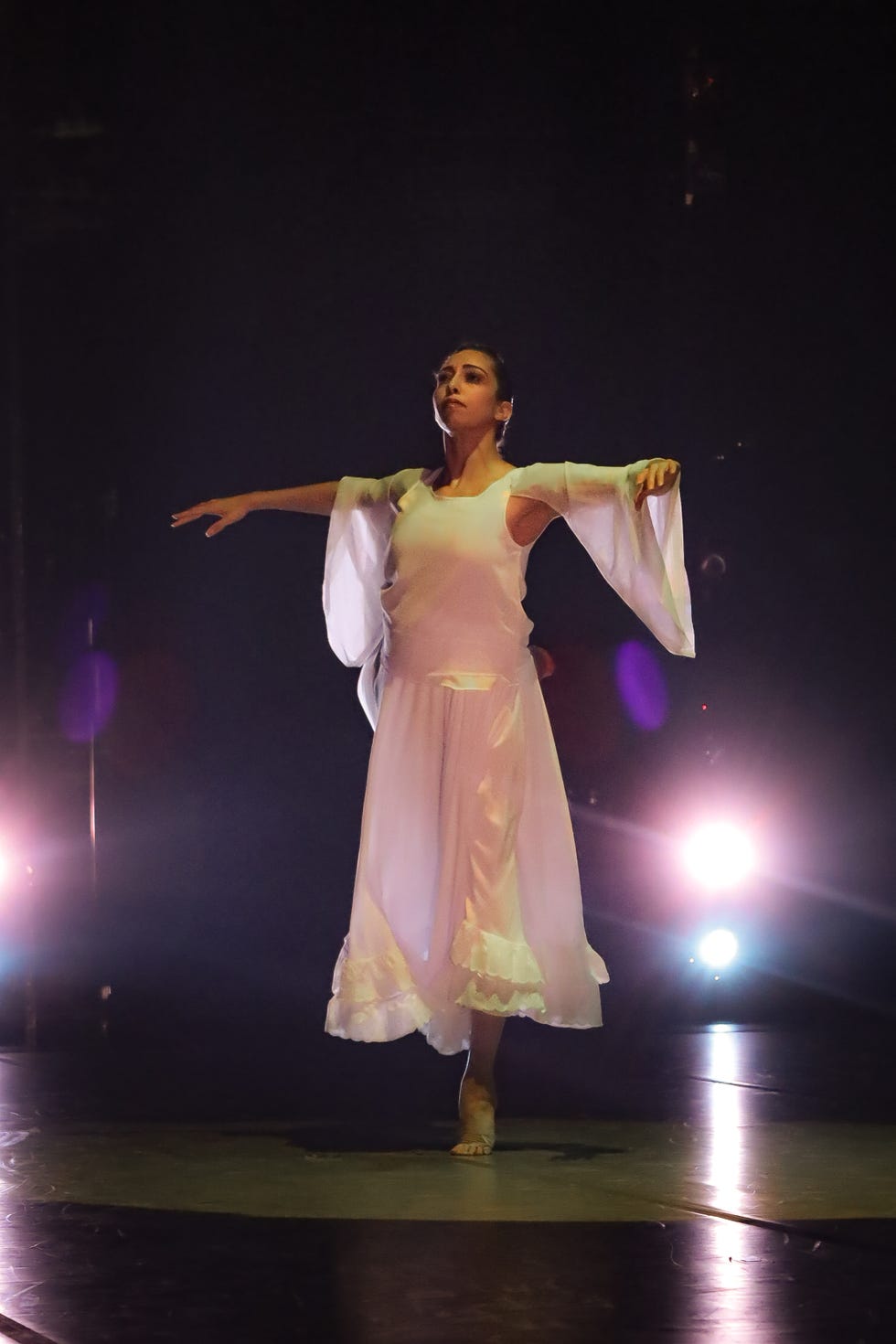
Alvin Ailey American Dance Theater dancer Sarah Daley-Perdomo.
For Sarah Daley-Perdomo, who is currently in her 14th season dancing with Alvin Ailey American Dance Theater and had her daughter in the summer of 2024, access to alternative work would have alleviated stress. “And, practically, it would have saved me from using all of my sick time,” she says. (Alvin Ailey American Dance Theater did not respond to a request for comment.)
She explains the artistic team encouraged her to tell them what she needed, which she appreciated. But it wasn’t set in stone. She believes companies can work toward structured policies where dancers know what protections are available—and that there’s a need to normalize pregnancy and parenthood onstage, too. More dancers are talking about this because they want to be able to continue working while having a family, Daley-Perdomo says. For her, it was “the desire to not have my career stop because I had a kid.”
Meanwhile, some freelance artists have even fewer institutional safeguards. Claudia Schreier is a choreographer who works with multiple companies, which means she doesn’t have a parent organization to help ensure protections. Speaking to ELLE prior to giving birth to her daughter, she described feeling that there was a “lack of structure,” because there’s so little precedent for this in her profession. “Historically, the vast majority of choreographers working in professional environments, specifically ballet companies, have been male,” Schreier says. (While the dance field, in general, is primarily made up of women, men statistically still dominate leadership positions and funding opportunities, Duffy’s research indicates.)
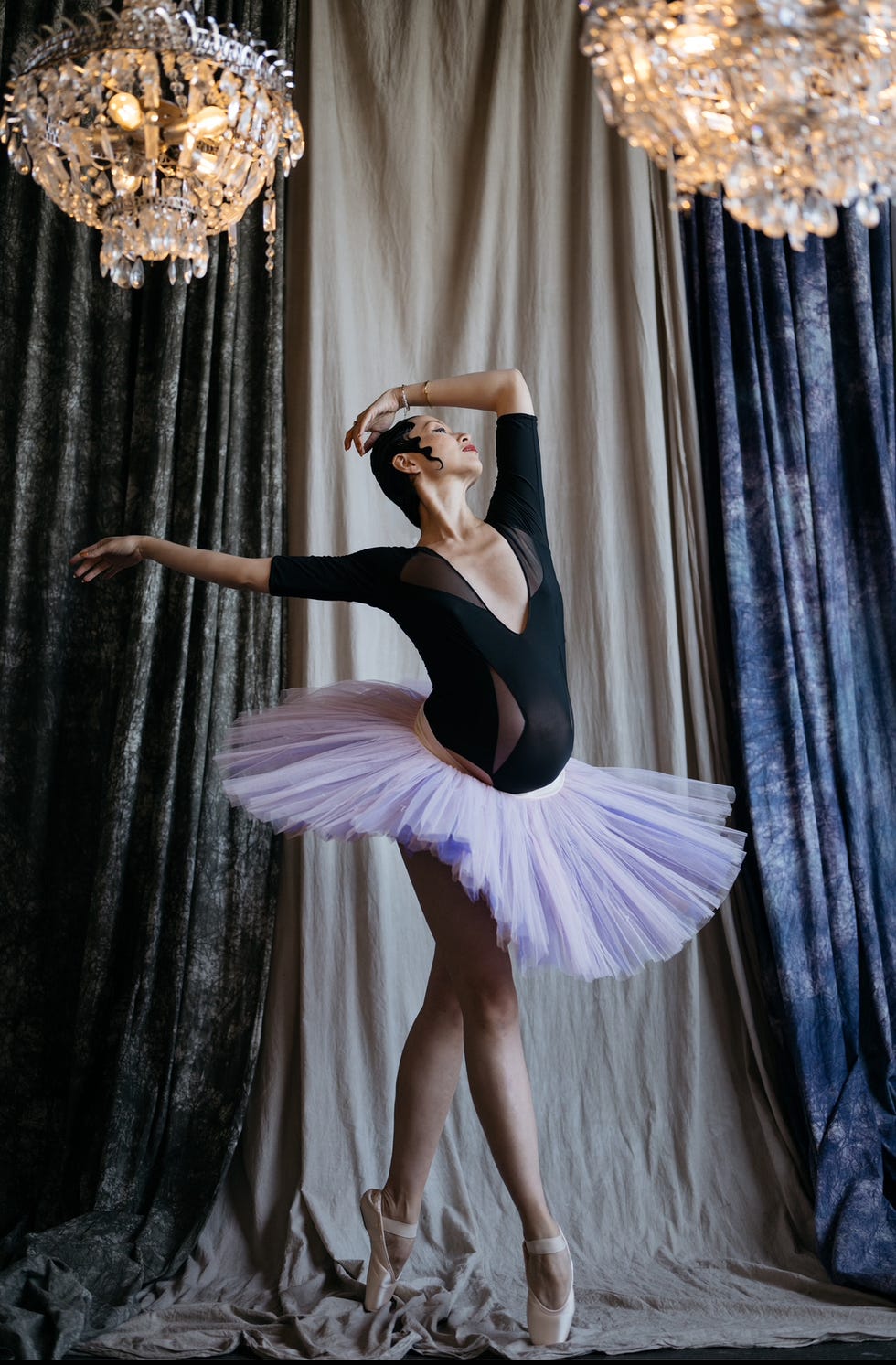
American Ballet Theatre soloist Zhong-Jing Fang during her pregnancy.
Schreier’s maternity leave was unpaid, and if she determines at any point that she can’t handle the travel, the number of hours, and the physical toll that her job requires, there’s no safety net, she says. It’s an issue Schreier sees as systemic, not a commentary on any single company. “There’s a lack of awareness and a lack of understanding about how essential it is to put these protections and support systems in place for families,” she says.
Some dancers are advocating for comprehensive change. Among them is Allison DeBona, owner and artistic director of artÉmotion ballet school and principal of the Ballet West Academy Peggy Bergmann Park City campus. DeBona was a first soloist at Ballet West and is the parent of two children. She acknowledges that she and her husband, former principal dancer Rex Tilton, had an “amazing boss” who wanted to work with dancers to ensure the environment met their needs. She didn’t feel like she had an aggressive timeline from the company to come back after giving birth, but was driven in part by wanting to reach professional goals.
“It didn’t dawn on me until after I started coming out of that experience—I was like, You know what? They didn’t understand what the whole coming back from a baby really was.”
“Once a dancer announces pregnancy, we sit and discuss the date and shows they can continue to dance through,” says Ballet West artistic director Adam Sklute. “This remains flexible, as things might change for the individual dancer throughout the pregnancy. After the dancer goes on leave from dancing, they are able to continue working and collecting a full paycheck doing ‘light duty’: assisting in the offices and/or with rehearsals or classes. At the agreed-upon date, the dancer then goes on maternity leave, and the amount of time they can take off is mapped out in the collective bargaining agreement.” Sklute adds that the dancer coordinates with the artistic director on an individual basis on a return-to-work plan, and notes Ballet West offers paternity leave for spouses who are company members.
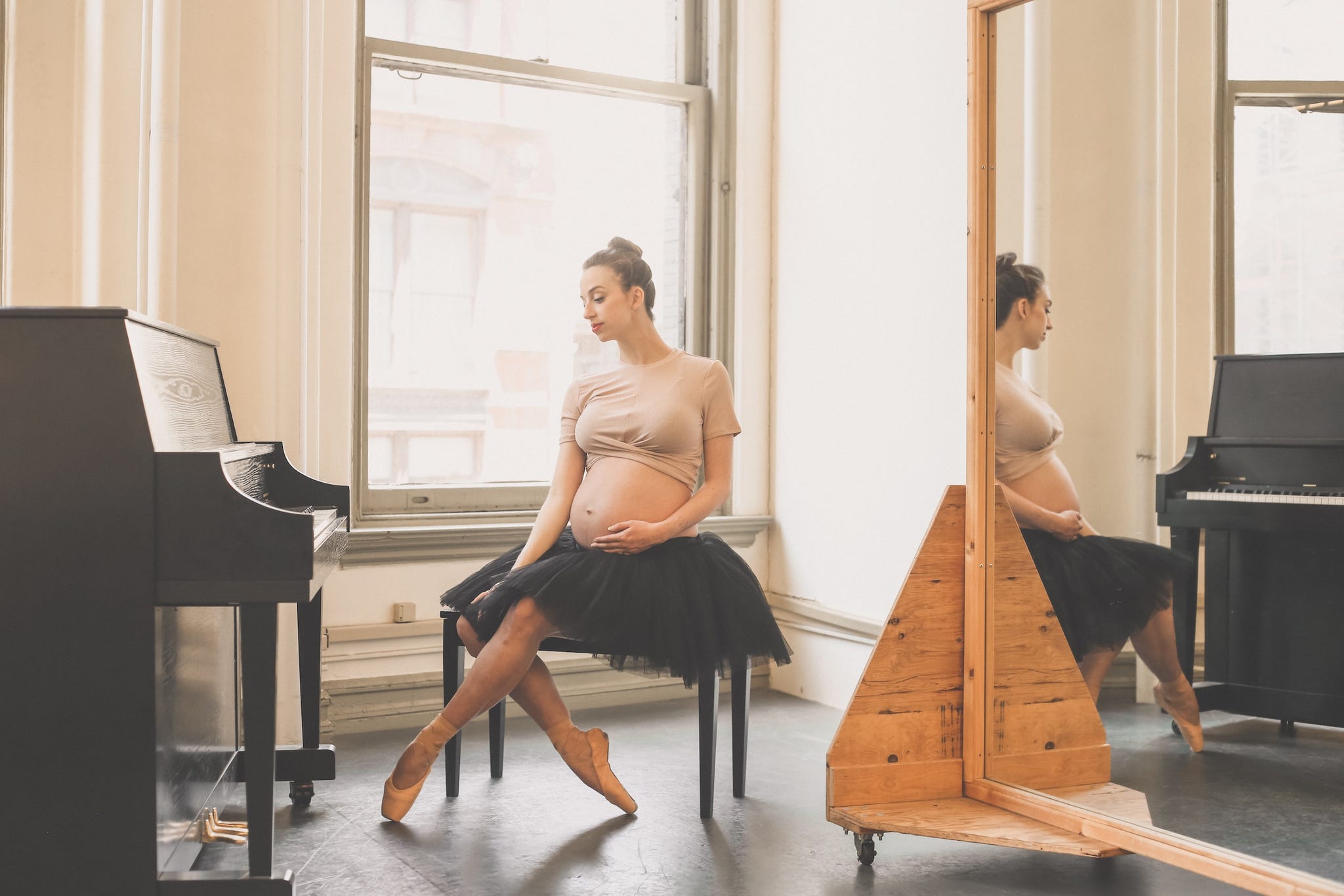
Retired American Ballet Theatre dancer Alexandra Basmagy.
After having her first child, DeBona experienced postpartum depression. She described crying out of nowhere while rehearsing roles that she had done for years, or feeling like she had a “very short circuit.” Meanwhile, people were telling her, “Look at you, you’re back!” “It didn’t dawn on me until after I started coming out of that experience—I was like, You know what? They didn’t understand what the whole coming back from a baby really was,” she says. Now she thinks there should be more contractual protections for women who give birth—or parents in general—when returning to work. If companies had a better understanding of what women go through physically and mentally post-birth, DeBona believes, dancers might feel safer. She says the impact that a lack of sleep has on a dancer is similar to being injured.
DeBona, who recalls being in the studio with electronic pumps in her leotard for breastfeeding, was open on social media about returning to work after giving birth. “I just felt responsible for bringing a little bit more honesty to the experience,” she says. The pressure around returning to work connects to a larger landscape beyond dance, DeBona says, where missing one day of work could impact your job. For her part, she was worried that she might seem unreliable if she were to take any additional time off from work after giving birth.
Achieving bigger shifts in the industry is a priority for DeBona. So far, that’s included cofounding Dancers & Motherhood, a collective devoted to supporting and providing resources for mothers in her field. Another cofounder, Ingrid Silva, a professional dancer with Dance Theatre of Harlem and a parent, says that the group is working for more inclusivity. “It’s important for there to be maternity and paternity policies, and postpartum support, so dancers don’t feel pressured to return so quickly,” she says. It’s a slow path, DeBona adds, but the ultimate goal is to find a system that would end up in AGMA contracts, where there’s a protocol for coming back after having a baby.
At ABT, Basmagy decided to retire after the 2024 Metropolitan Opera House summer season, concluding a 13-year career with the company. But she was determined to be part of fighting for the workplace protections that she knew from experience were desperately needed. “If I could do something to change the way the company runs for the people behind me, to make it easier or more inclusive, I’d want to be able to do that,” she says.
“We’re told we should do it ‘for the love of the art form,’ but we still have bills to pay and families to raise.”
On Feb. 6, 2024, the dancers and stage managers of American Ballet Theatre voted to authorize a strike. Later that month, AGMA ratified a three-year agreement with the company. Highlights included new parental leave benefits (including leave for a non-birthing parent, which didn’t exist previously) and a commitment to keeping dancers on contract until the time of a dancer’s choosing. “We dance because we love it, and that’s the angle that’s always pushed on us,” Basmagy says. “We’re told we should do it ‘for the love of the art form,’ but we still have bills to pay and families to raise.”
Other AGMA companies have also fought for improved policies. Ballet West’s three-year agreement, which was ratified in 2022, included increases in paternity or partner leave from two weeks to three weeks; New York City Ballet’s 2022 three-year agreement included paid family leave for non-birthing parents through the NYS Paid Family Leave policy; and Atlanta Ballet’s current contract, which was ratified last fall, includes expanded maternity pay and workplace protections for pregnancy.
Now dancers at ABT are experiencing the impact of that policy firsthand. Zhong-Jing Fang was pregnant throughout the company’s 2024 summer season with her second baby. She danced through the first four months of her pregnancy, then focused on observing rehearsals and attending meetings with sponsors and donors. In November, she joined ABT’s incubator project as a choreographer.
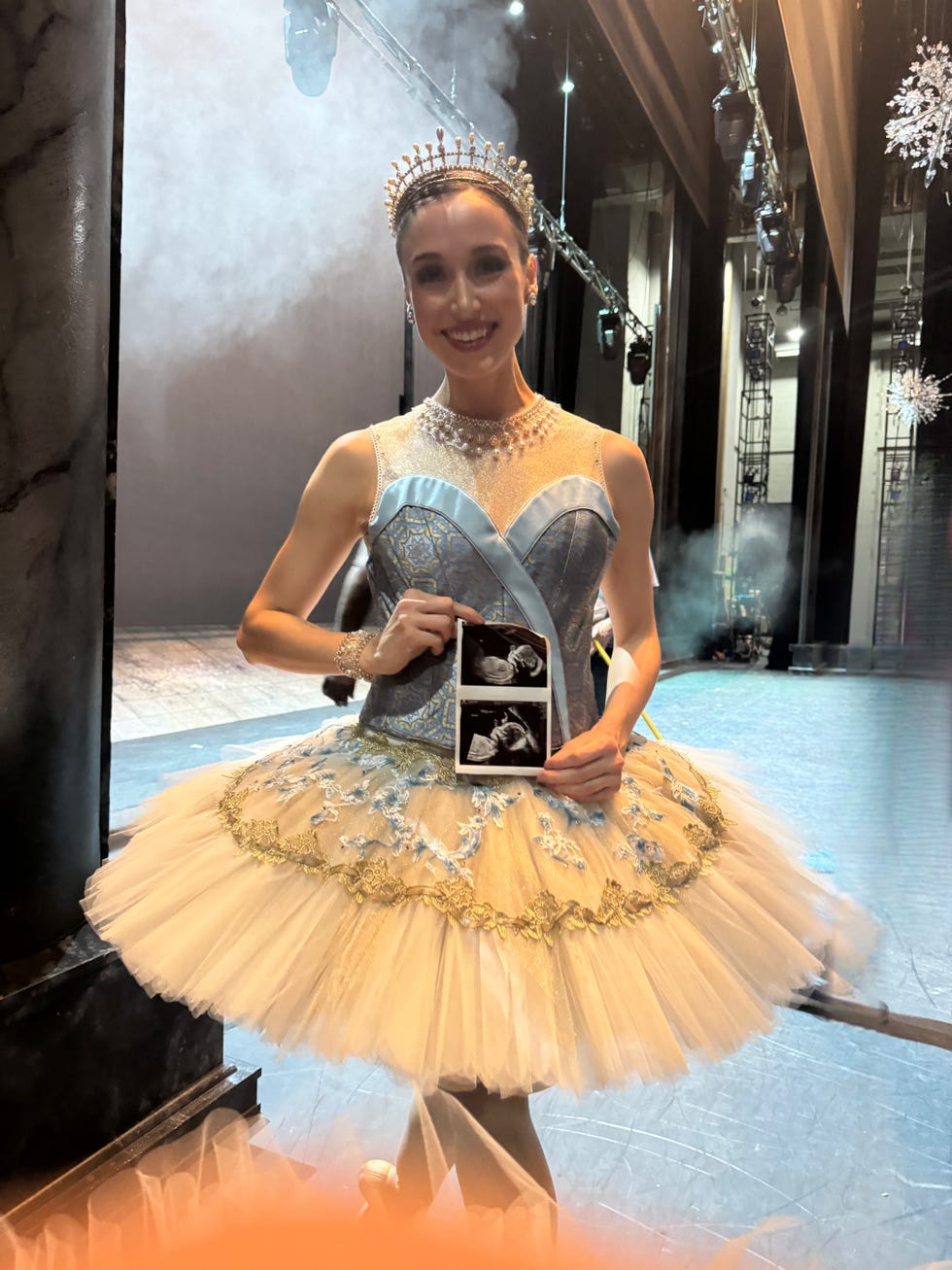
American Ballet Theatre soloist Betsy McBride.
Fang thinks that parenthood has made her a freer artist. It takes work to do both (and Fang mentions that the way her husband contributes to child care is an especially important factor), but she doesn’t believe a dancer has to be limited to just one role or the other. “I’m a dancer. I’m also a mother,” she says. “That is creating a full package of who you are becoming onstage.”
Another soloist at ABT, Betsy McBride, found out she was pregnant in the midst of the company’s summer season, two days before Swan Lake was set to open. McBride performed until she was five and a half months pregnant before moving to alternative work. During her transition, she taught classes for the children’s and pre-professional divisions at ABT’s Jacqueline Kennedy Onassis School and staged a section of Alexei Ratmansky’s Seasons ballet at the JKO School. She also helped sort and stock pointe shoes for the company. “I would have really struggled financially if I had stopped working when I could no longer perform,” she says.
In the past, she would have run through maternity leave pay with months left to go before her baby was born. Now she was on full salary and was able to work up until the baby was born before taking maternity leave, since the new policy gives every dancer the opportunity to choose how long they feel comfortable working. “It’s also been really great personally getting to still contribute to the organization and be around my colleagues,” McBride says. Adding that she’s grateful for other mothers at ABT, including Basmagy and Post, who pushed for these protections, McBride says that “this new policy makes planning for a family while dancing much more attainable.” She hopes it can inspire or push other dance organizations, too.
Issues persist across the field, but “conversations have to keep happening, because it’s so easy to slip back into how it always was,” Basmagy says. She thinks being a parent and an artist is special. “People should not only just be able to be both, they should be able to fully enjoy being both.” But dancers themselves continue to fight for a workplace that’s more inclusive to parents and families. “It’s incredible to know that we’re not alone, and we have each other’s backs,” Fang says. “Now that I’m part of this, I will use my power to protect and to continue to help the younger generation.”
elle


